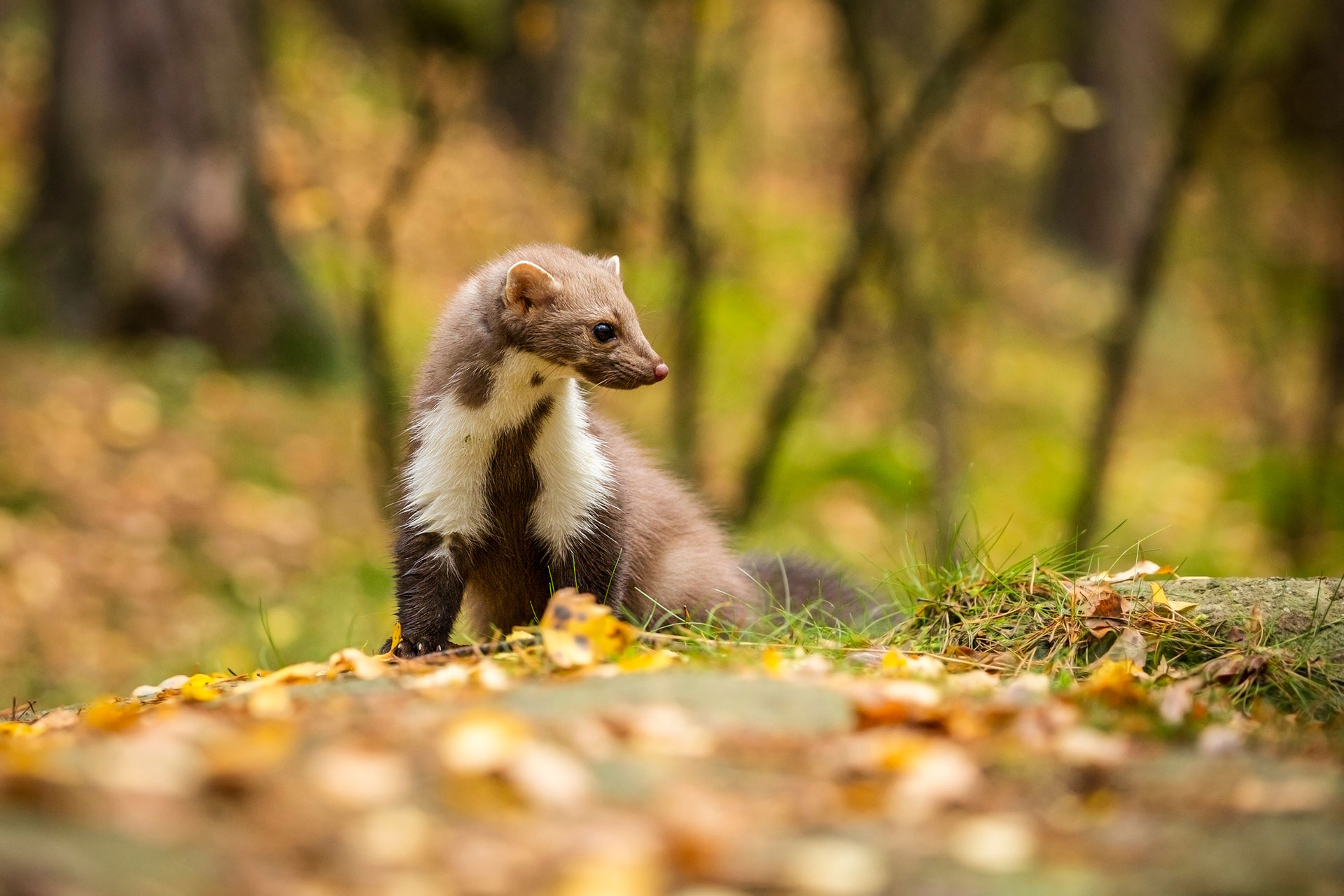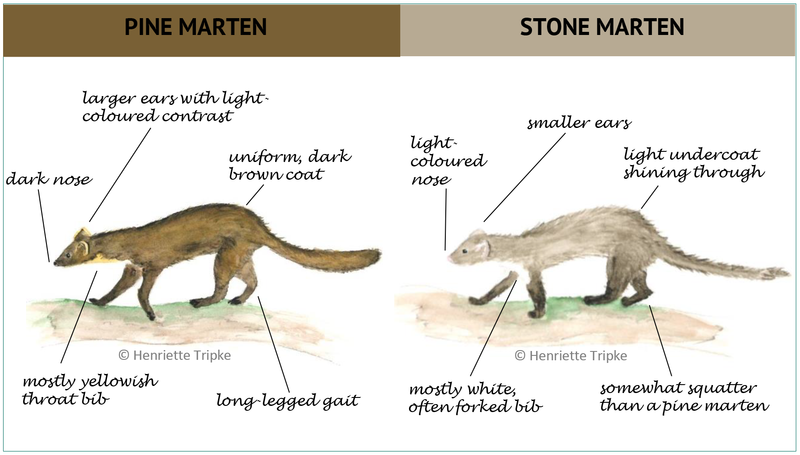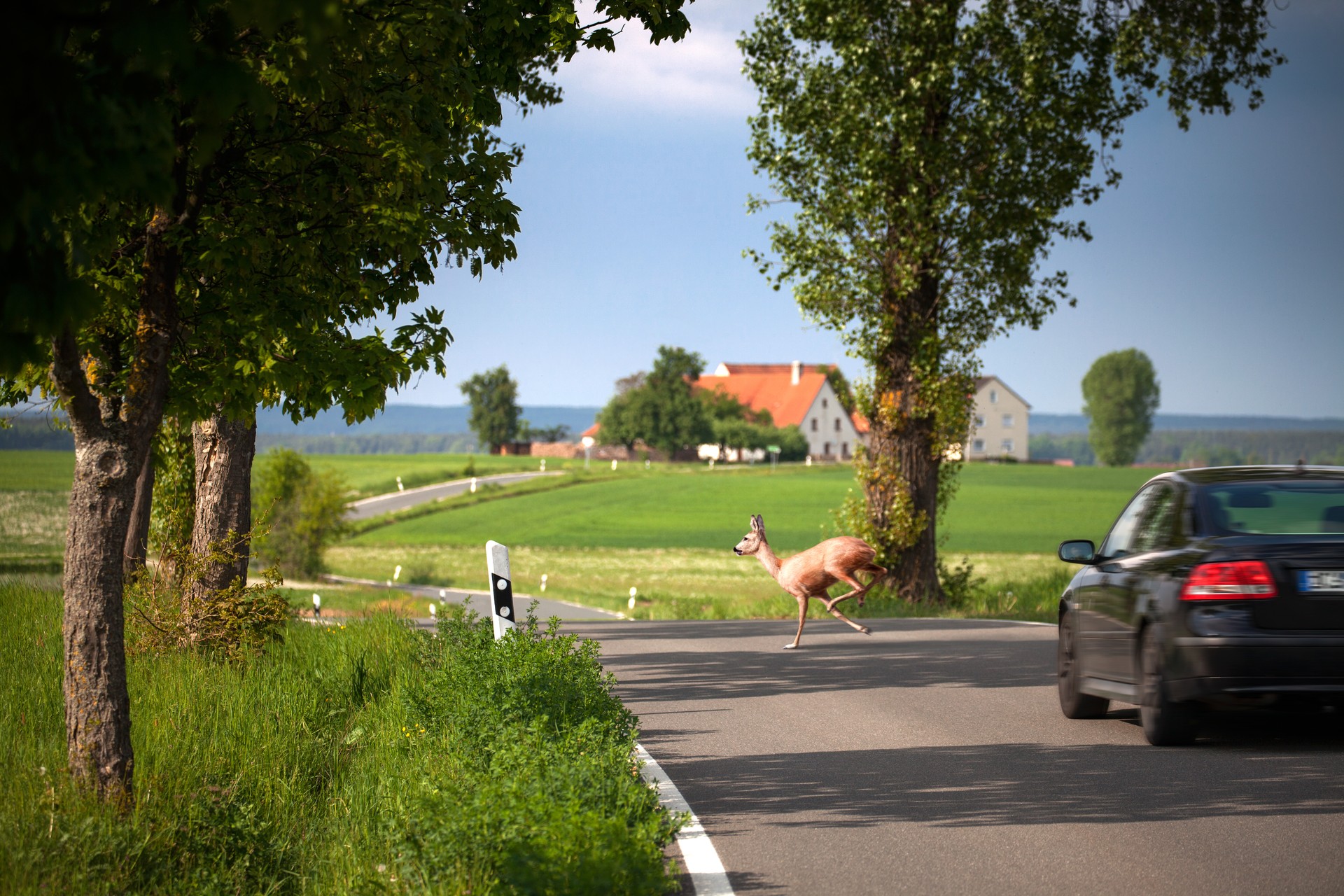The pine marten (Martes martes) is often confused with its close relative, the stone marten (Martes foina). This is because both species occur together in large parts of Europe and are sometimes found in the same habitats. For a long time, the pine marten was considered a forest dweller that avoids open land - in contrast to the stone marten, which, as a hemerophile species, likes to make itself comfortable near humans. The latter is known, for example, for biting through the cables of cars, or making noise in the attic.
However, recent studies suggest that the pine marten is also far less settlement-shy and restricted to forests than previously thought. It has thus been detected both in fragmented forests and in gardens close to forests. The presence of trees may well still be an important habitat requirement for the pine marten, but not every marten you see on the side of the road or in a village on the edge of the forest is necessarily a stone marten! So it pays to look closely, and to be able to distinguish between the two species.
There are several characteristics that distinguish the two martens from each other
Pine or stone marten? Further distinguishing features (PDF, 1MB)
The nose and the ears
- The pine marten has a dark brown nose, while that of the stone marten is pale and pink.
- The ears of the pine marten are also longer, and have a light-coloured edge, while those of the stone marten are smaller and more widely spaced on the head.
The fur colour
- The pine marten’s fur is a fairly uniform brown, while that of the stone marten is greyer, with a lighter, whitish undercoat shining through.
The bib or throat patch
- Both the pine marten and the stone marten have a light-coloured patch on their throats that is unique to each animal. In pine martens, this throat patch is usually yellowish with a tinge of red, whereas in stone martens it is usually white, often forked, and can extend down the forelegs.



